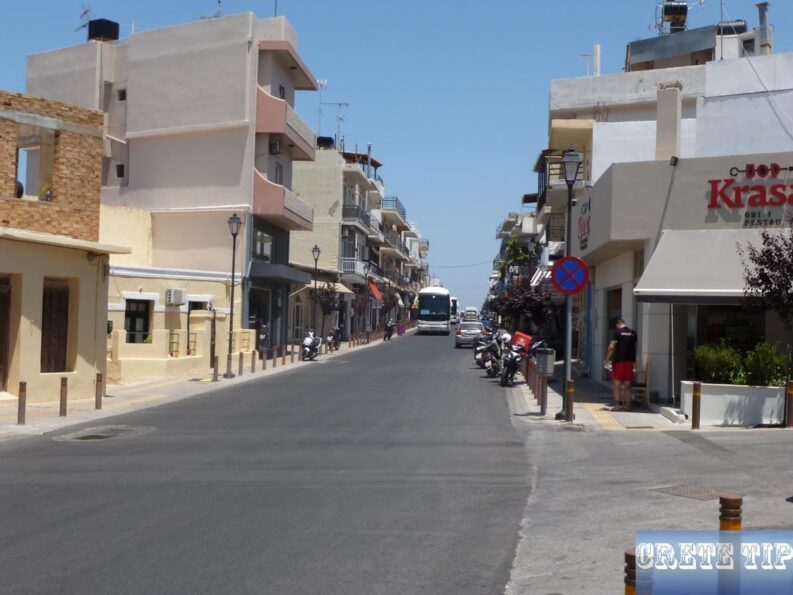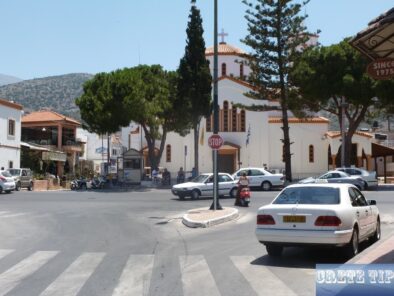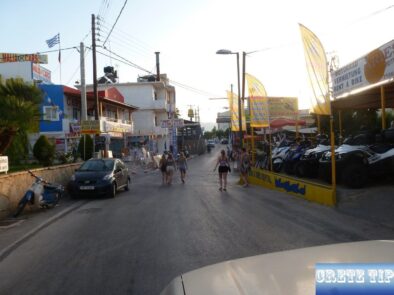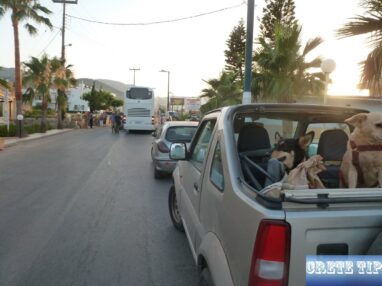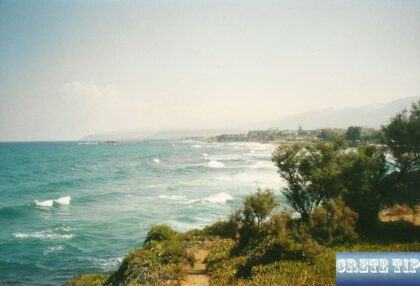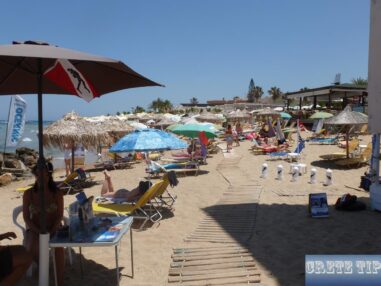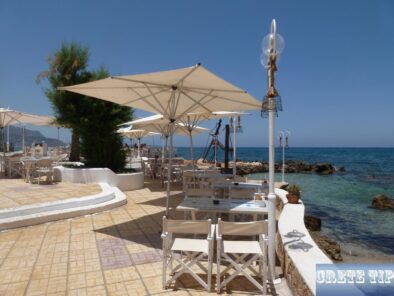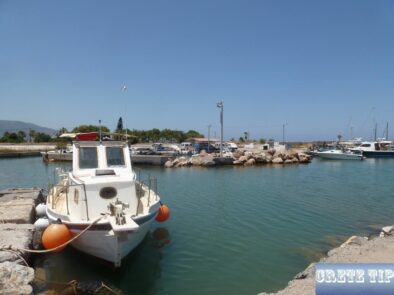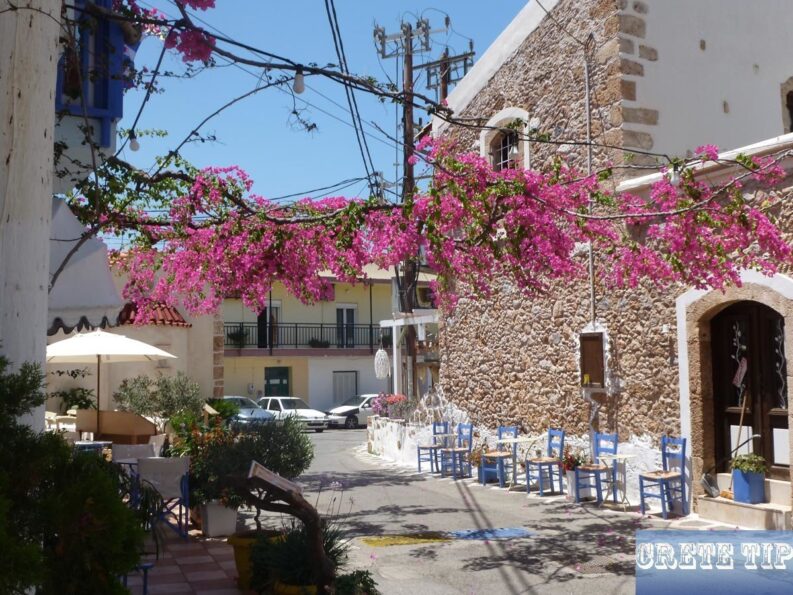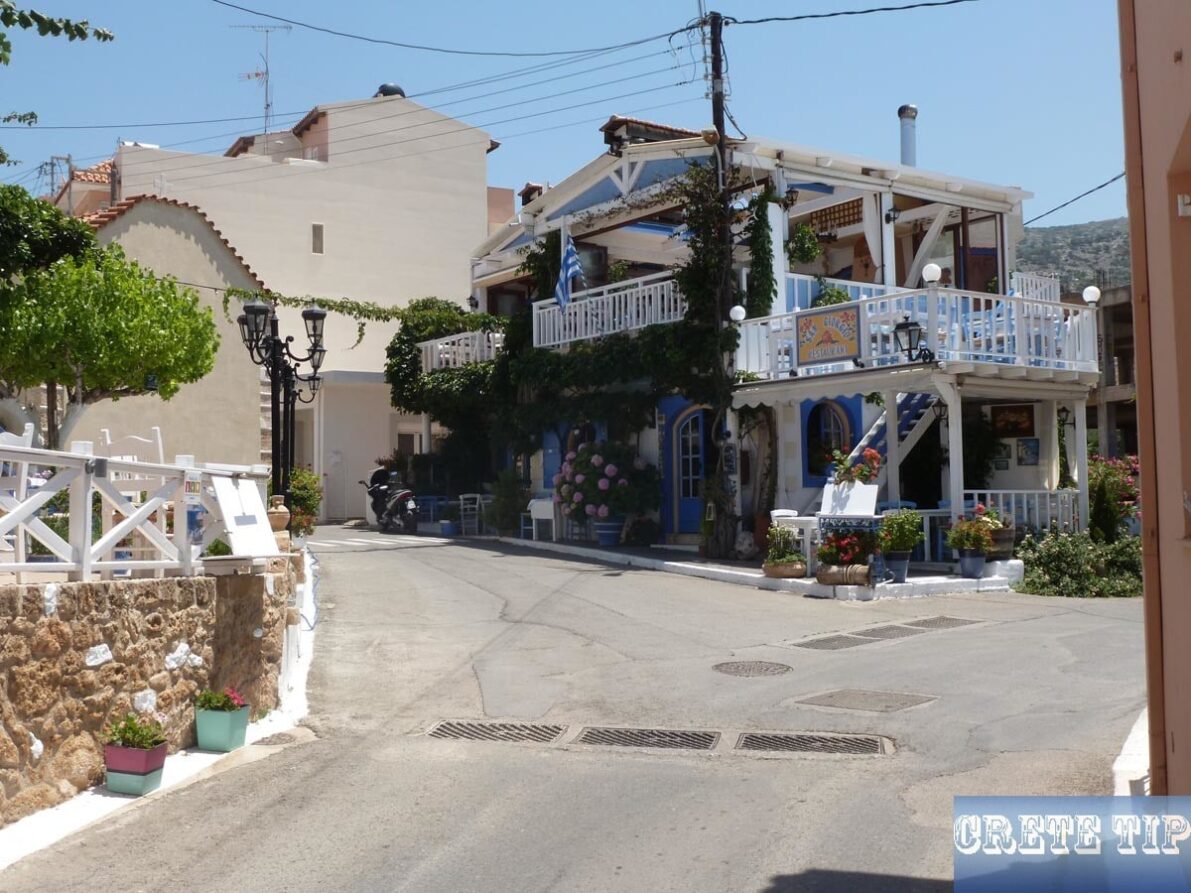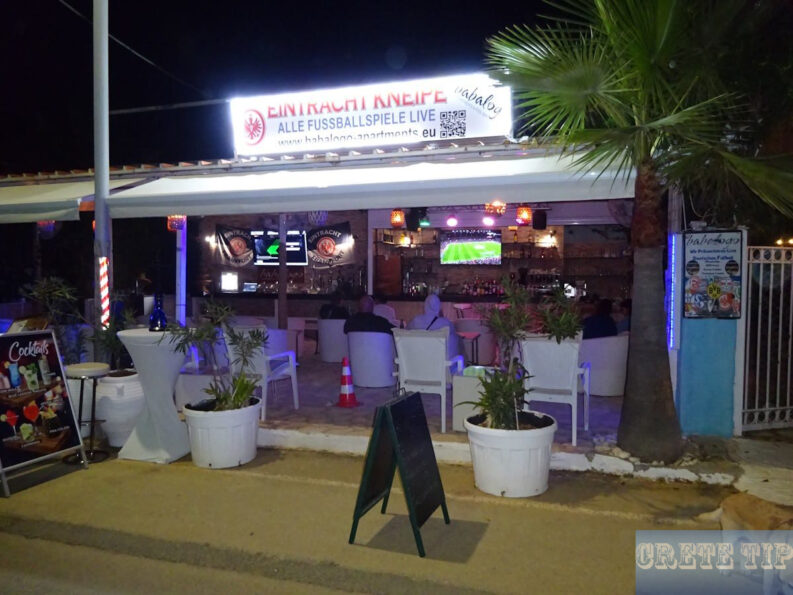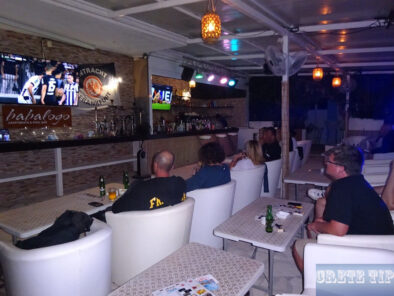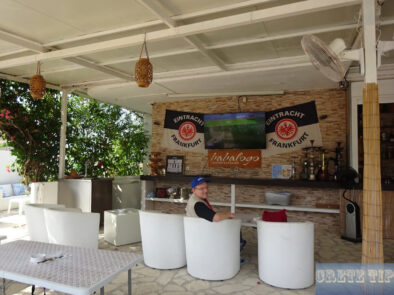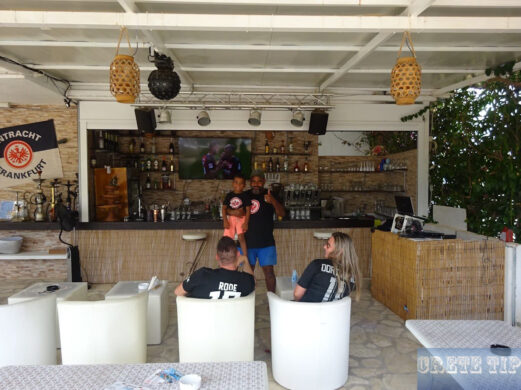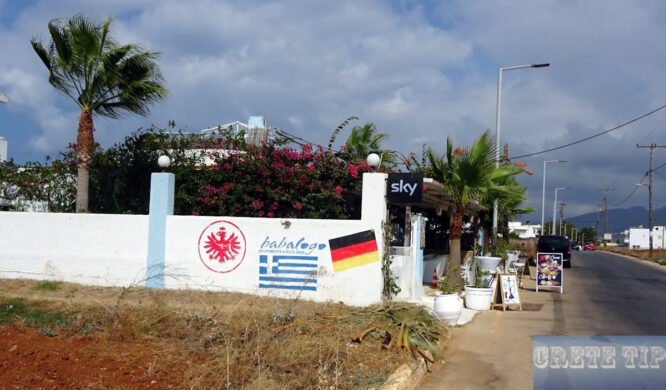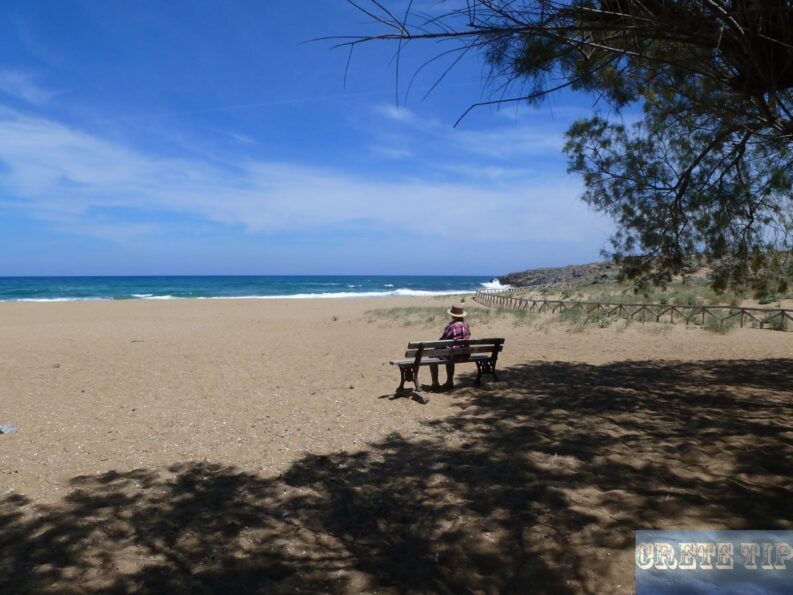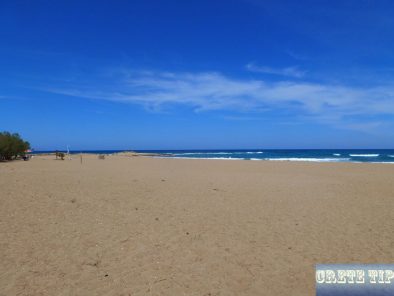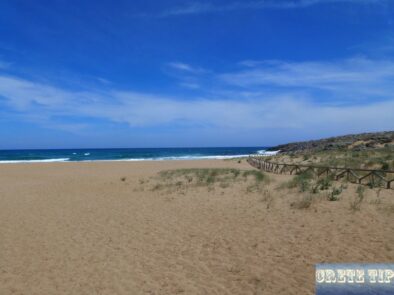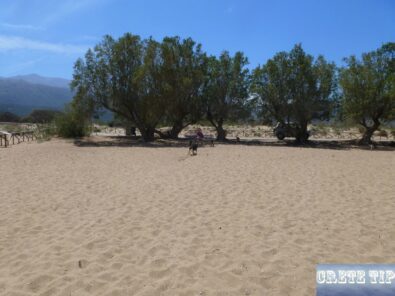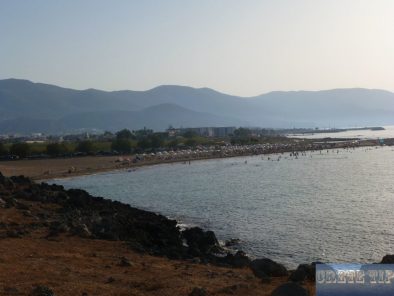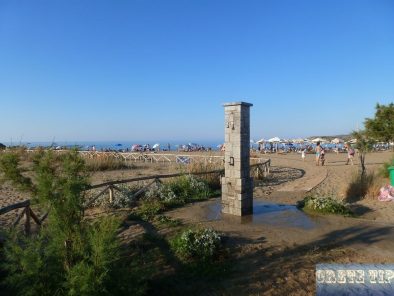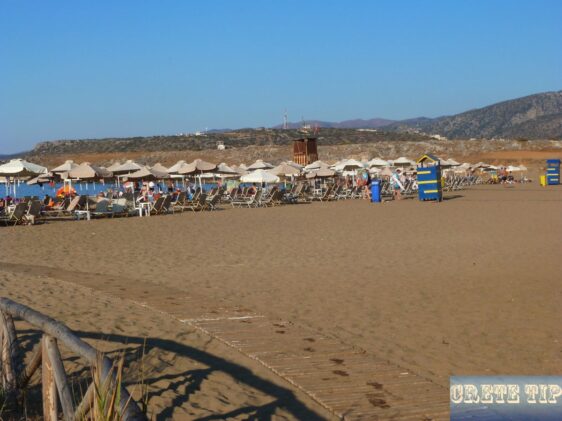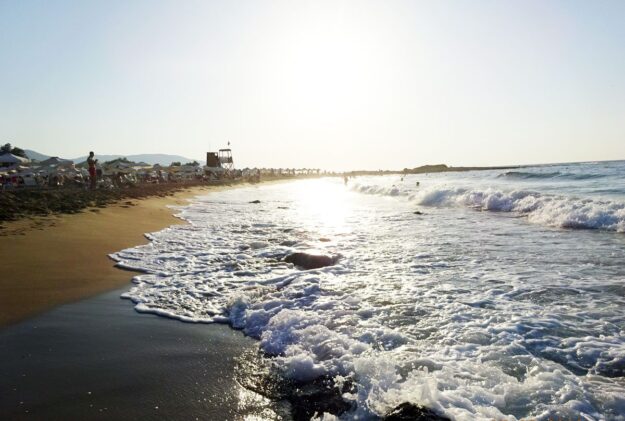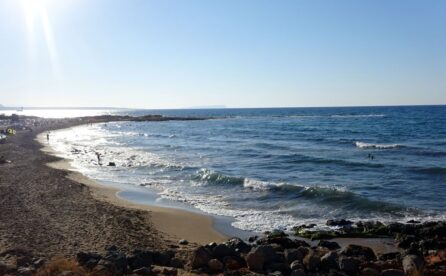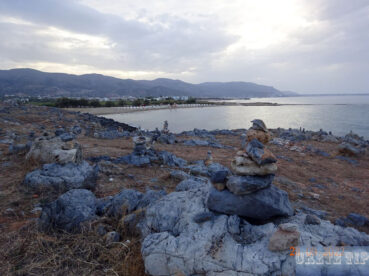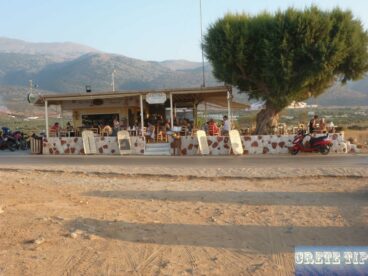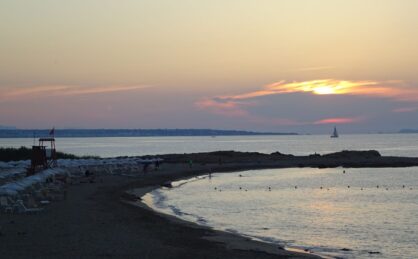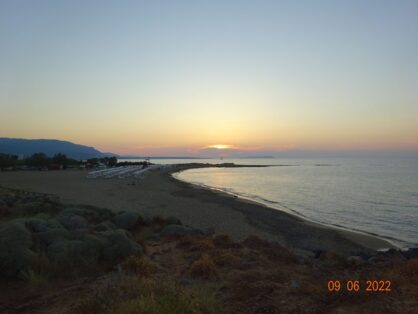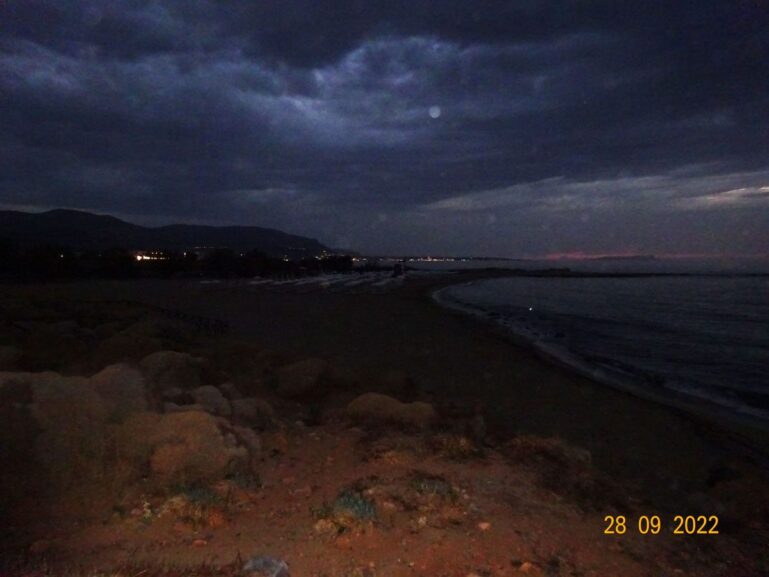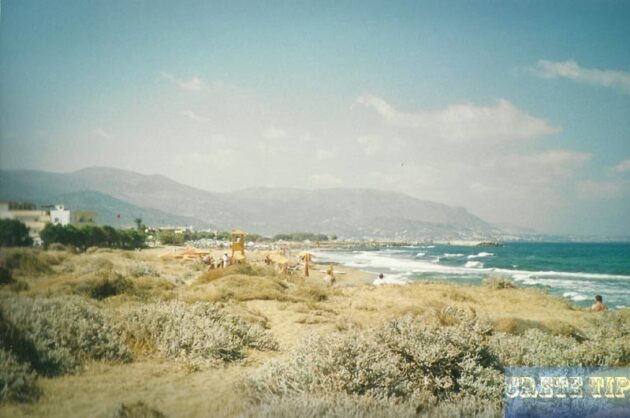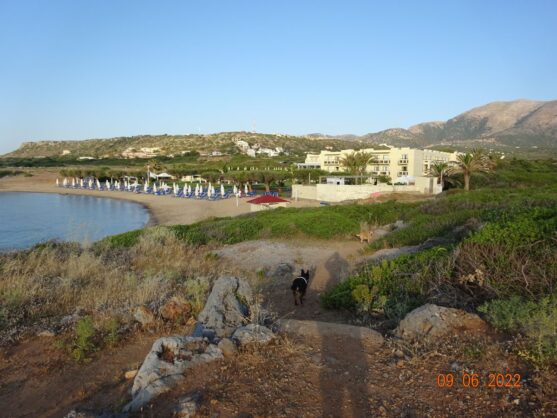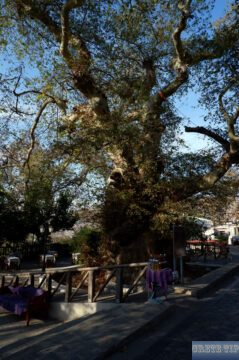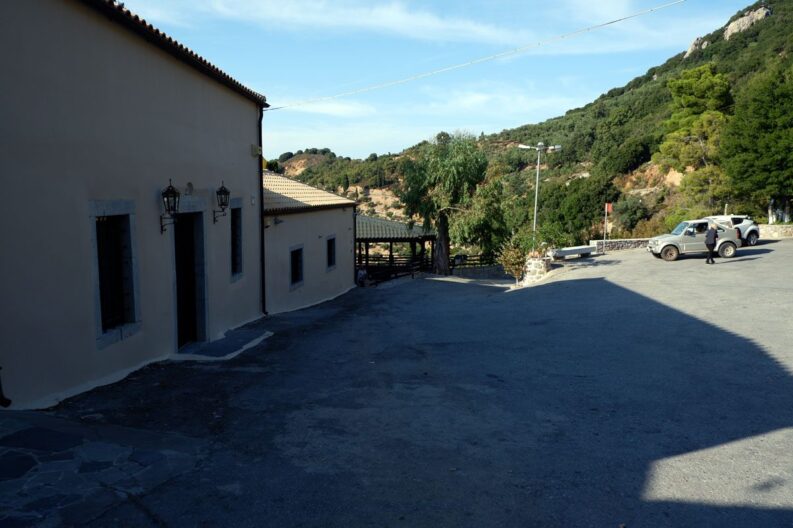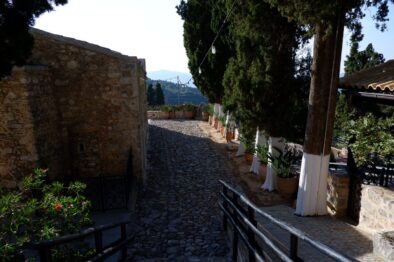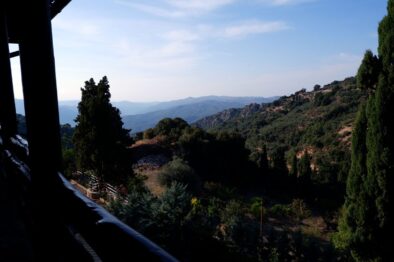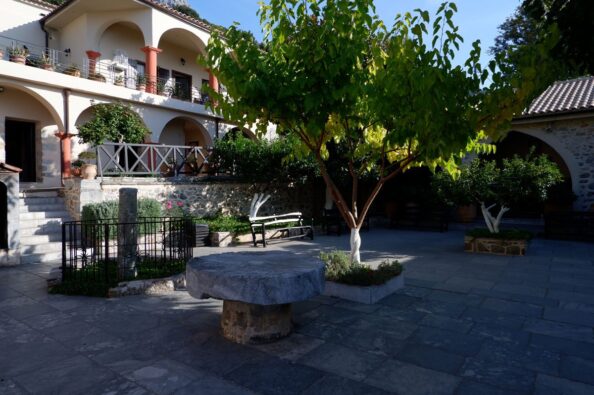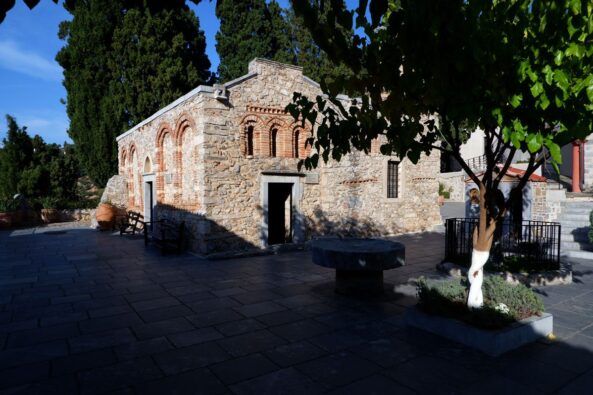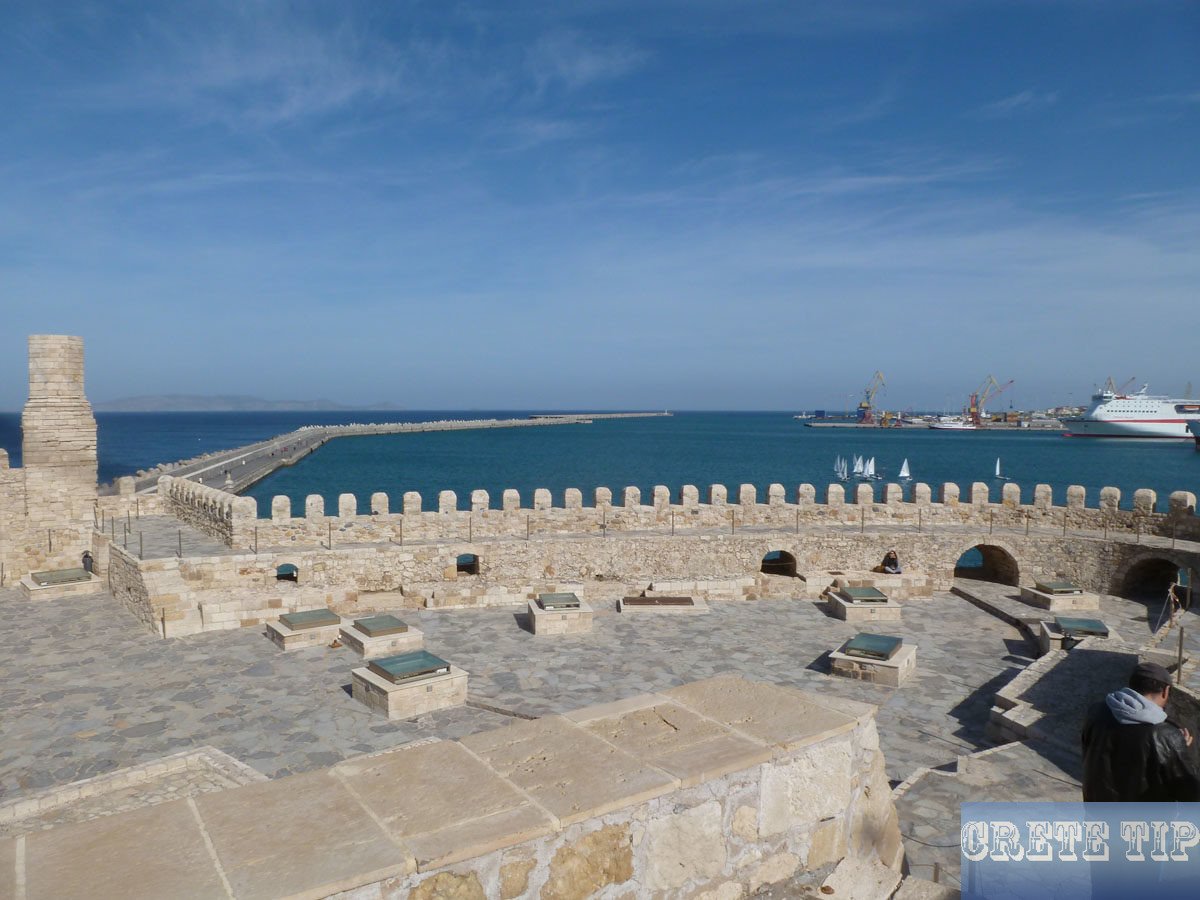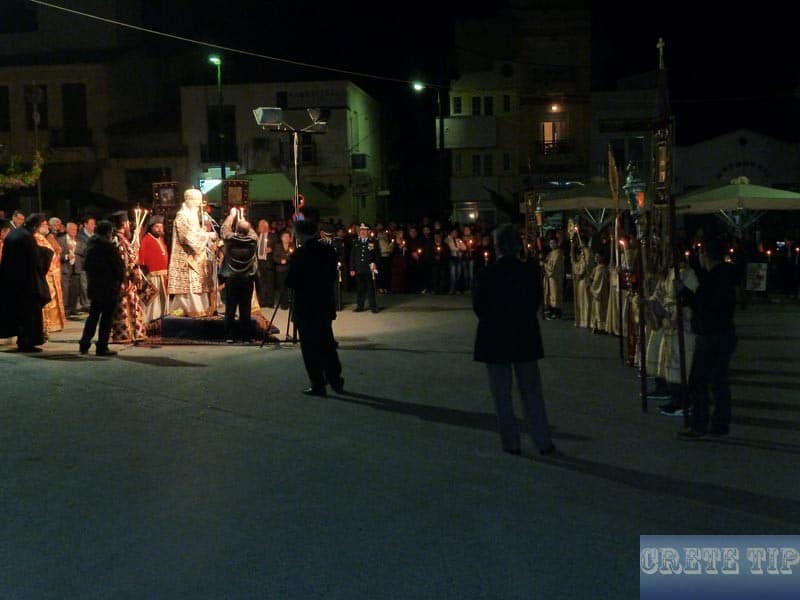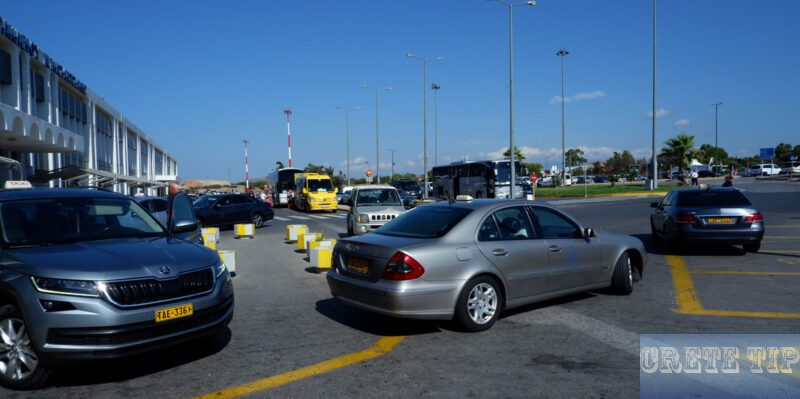Malia stands on Crete for sun, beach, quad bikes and parties all night.
Old town, beaches, Overview and orientation and hotels at Malia and Stalis.
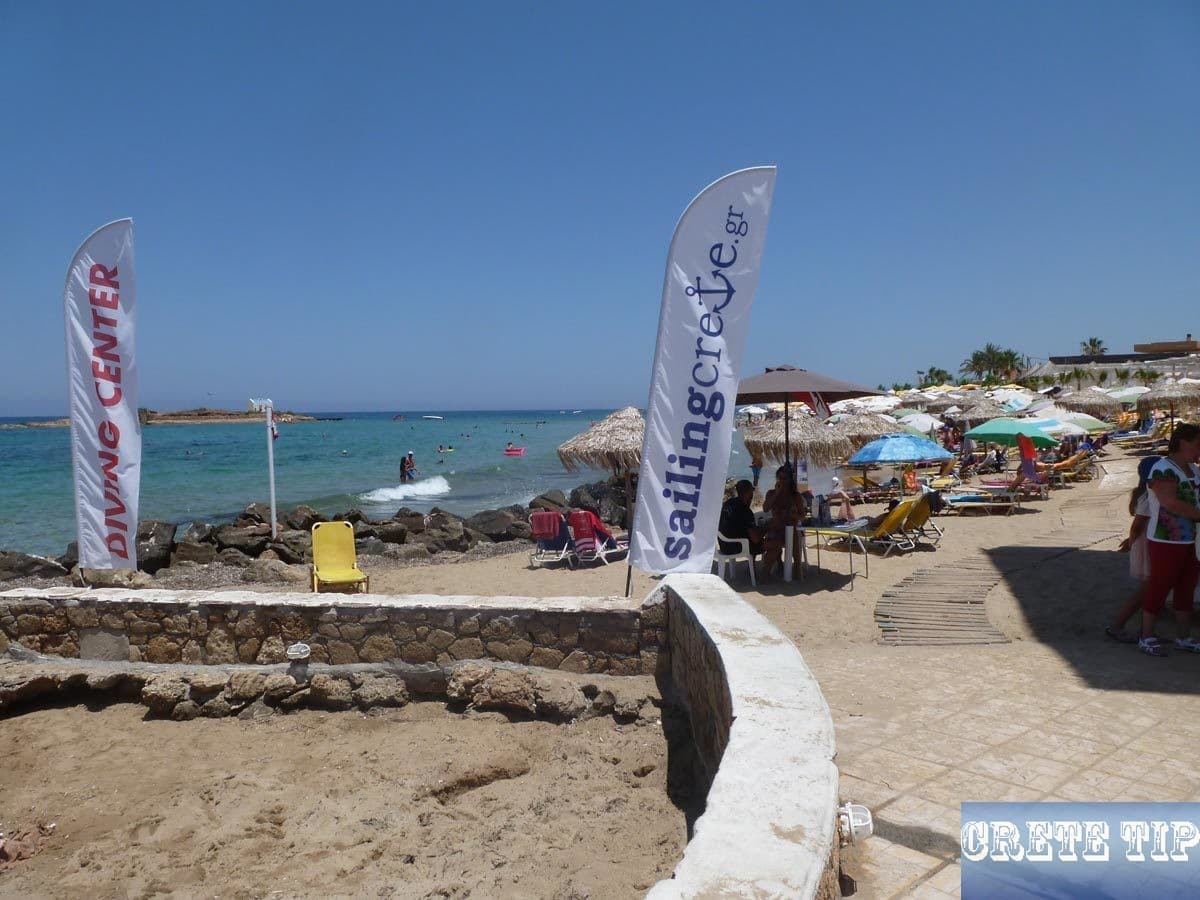
Malia is possibly the most crippled place on Crete and is often considered to be brash, businesslike and with wild stories about the nightlife. The beach, long and sandy as it is, is sometimes grotesquely crowded.
Malia
Table of Contents
Party Mile of Malia
After these prejudices are listed, however, it can also be a great place for the holiday, as long as you are willing to adapt to the course of things, i.e. party throughout the night and sleeping during the day.
In addition, the extra of a traditional village that existed before the arrival of the first tourists and the fabulous Minoan Palace of Malia straight down the road as well as with various, beautiful sandy beaches.
On the ‘Beach Road’ the two villages of Malia and Stalis practically grew together and hotel ranks to hotel, so you will have the impression, it is practically a single village.
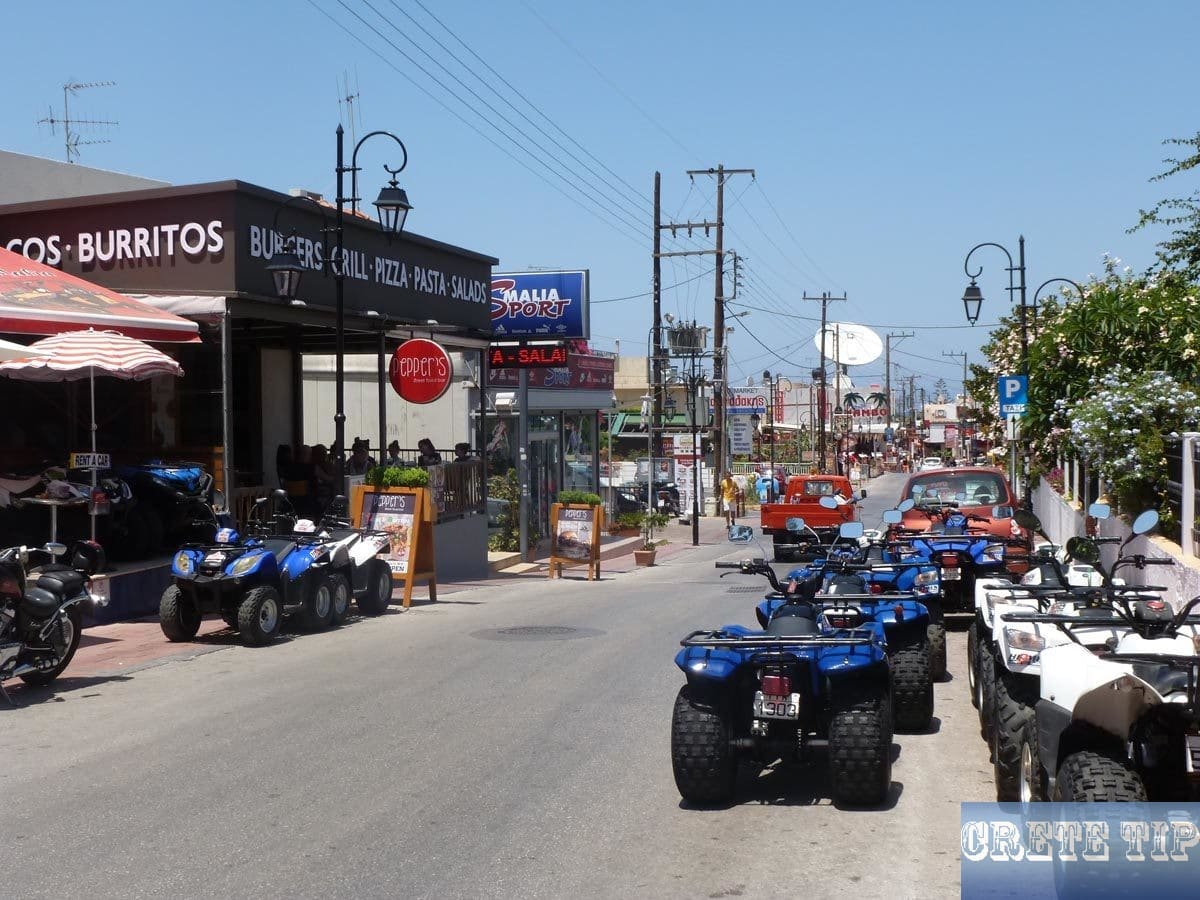
Beaches of Malia
Beaches stretch in both directions from Malia. If you are ready to walk a bit or ride a bike, quad bike or rental car, you will be rewarded with better sandy beaches with fewer visitors, although total solitude will remain a dream. If you prefer solitude or at least some places with fewer tourists, you should look for more remote places like Zakros!
The central beach of Malia is directly from the center in the direction of the sea, but in high season one must be lucky enough to find a suitable place between the human masses.
At the eastern end of the beach is a small church, surrounded by dunes and marshy spots and frogs. There you can swim to a tiny island just off the coast.
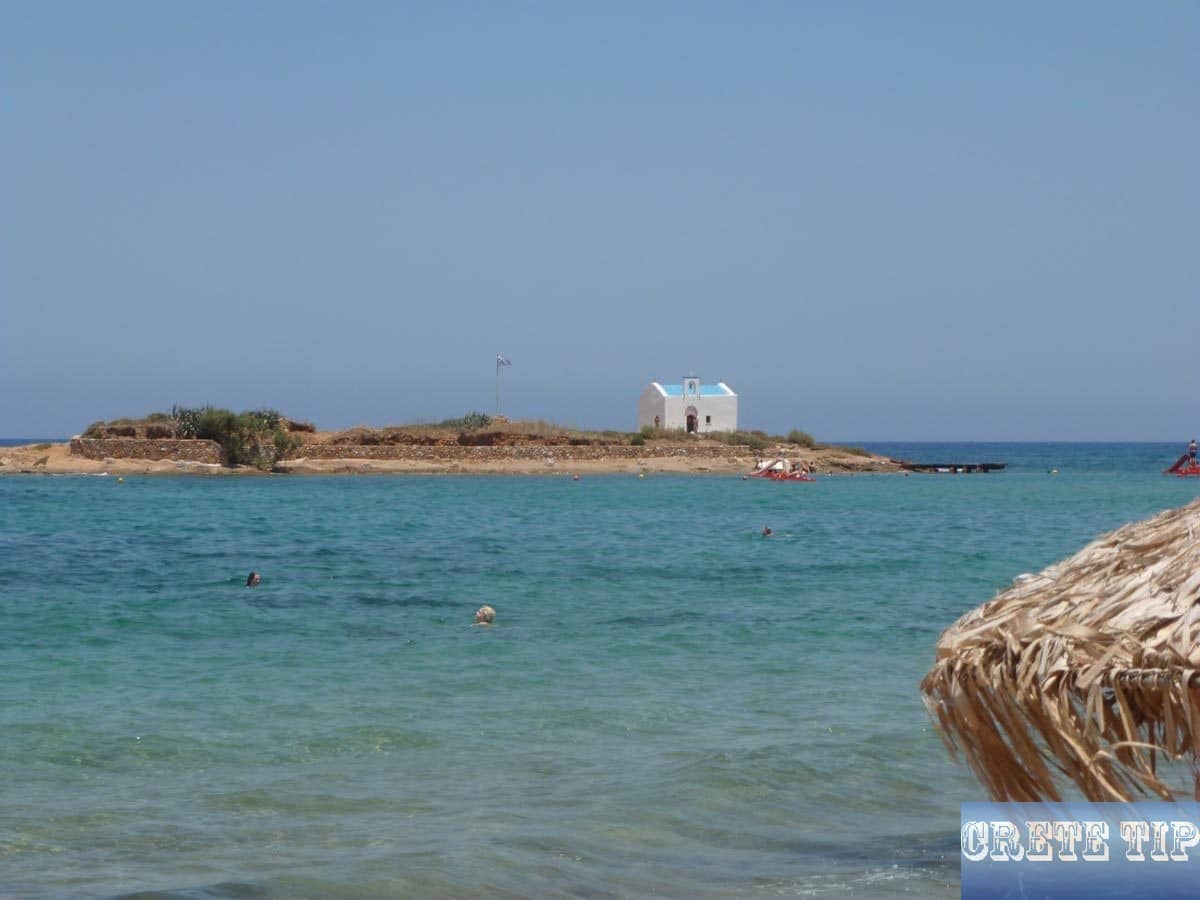
However, you should wear bathing or swimming shoes, as the rocks are too sharp here to explore the island easy. A white chapel (unfortunately always locked) with surrounding water basins in the rocks with many crabs, shells and sea urchins on the sea-side of the island is waiting for you as a reward.
There are also beaches west of Malia, but the tempting places are in the east: the ‘Sun Beach’, about 1.5 miles (2.41 km) from the center, where there are free trampolines and pools to use as well a wide selection of sun beds, drinks, water sports and other entertainment.
Then followed the recommended Tropical Beach of Malia (now called Potamos beach) with even more beach chairs, but less disturbing tourist boats and parascenders.
And finally, Potamos arrives at the mouth of a small river near the palace, with sun beds and a cafe.
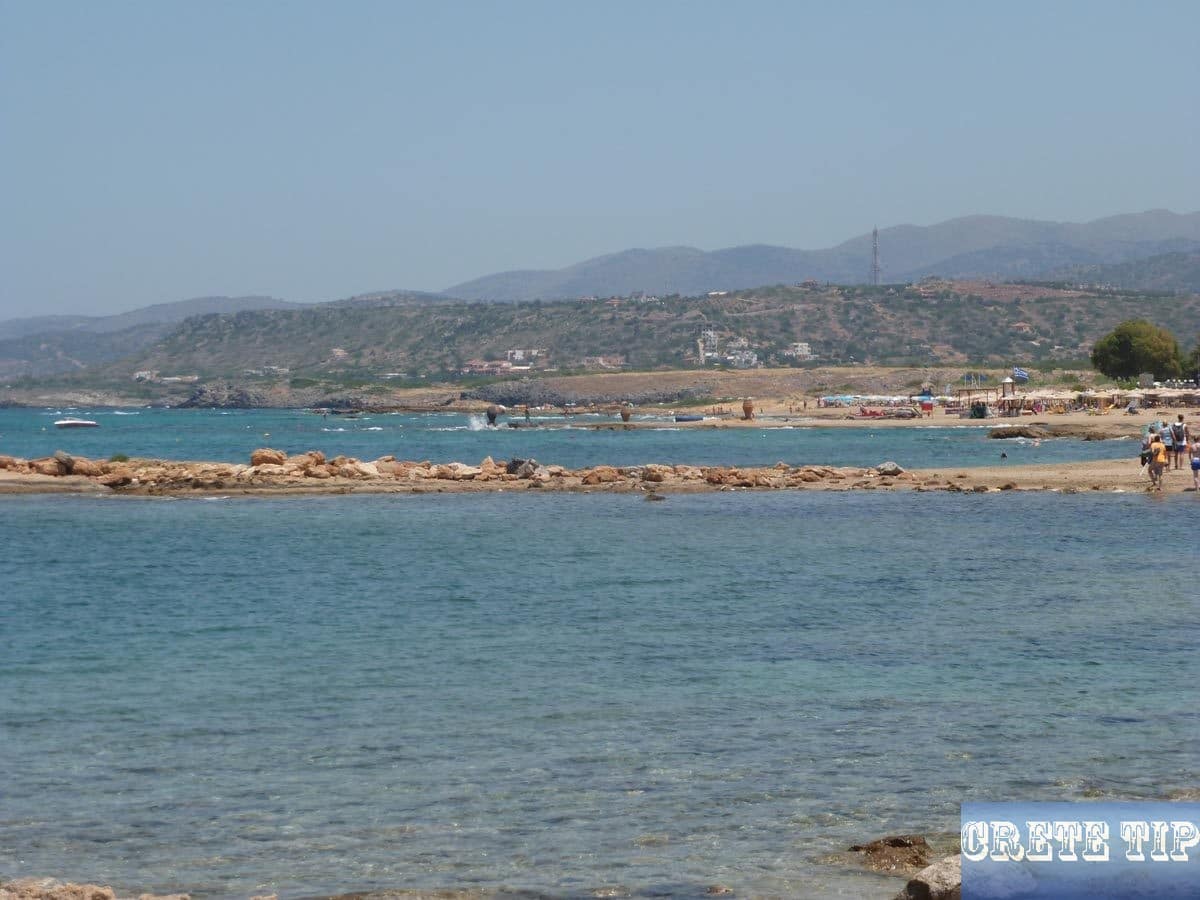
What should be considered in any case: as the beaches of Malia are practically at the open sea, swimming is hardly possible as soon as the wind speeds reach 12 miles (ca. 20 km) per hour – which is not a rare occurrence with the mostly prevailing northwest winds.
For those who want a lot of swimming, they should visit protected bays – like in Elounda – where practical almost every day swimming and many other water sports are possible.
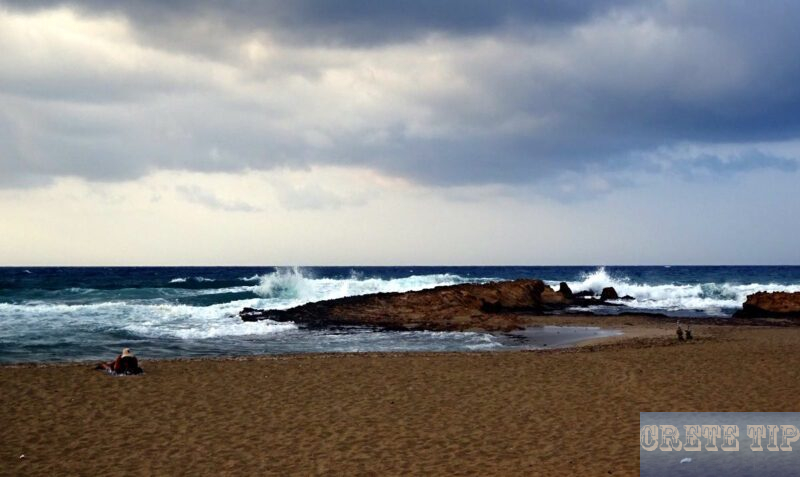
Overview of Malia
Malia consists of two separate parts, located on the opposite sides of the old national road (Venizelou). The heart of the tourist life is in the north in the direction of the beach, where two main roads wind themselves for more than a half mile towards the sea.
One – Zahariadhi – from the large crossroads at the church at the western end of the actual Malia, the other – Dhimokratias – a little further towards the east. After about 300 yards (ca. 274 m), the two streets meet each other and lead as a single street along in front of supermarkets, souvenir shops, travel agencies, cafés, restaurants, bars, video shops, discotheques, nightclubs as well as a McDonald’s restaurant to the sea. At the end there is a car park, a small port and access to the beach.
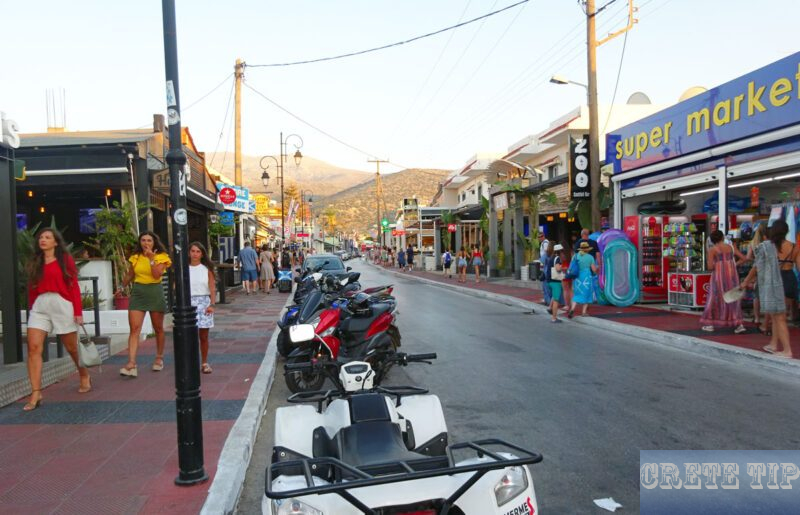
It takes you about 15 minutes to walk, if you stay away from the many shopping opportunities and amusement – or it is at midnight when it is busiest.
As mentioned at the beginning, the village on Beach Road is actually two: Stalis and Malia, which have become unrecognizable and inseparable merged into a single, large tourist center.
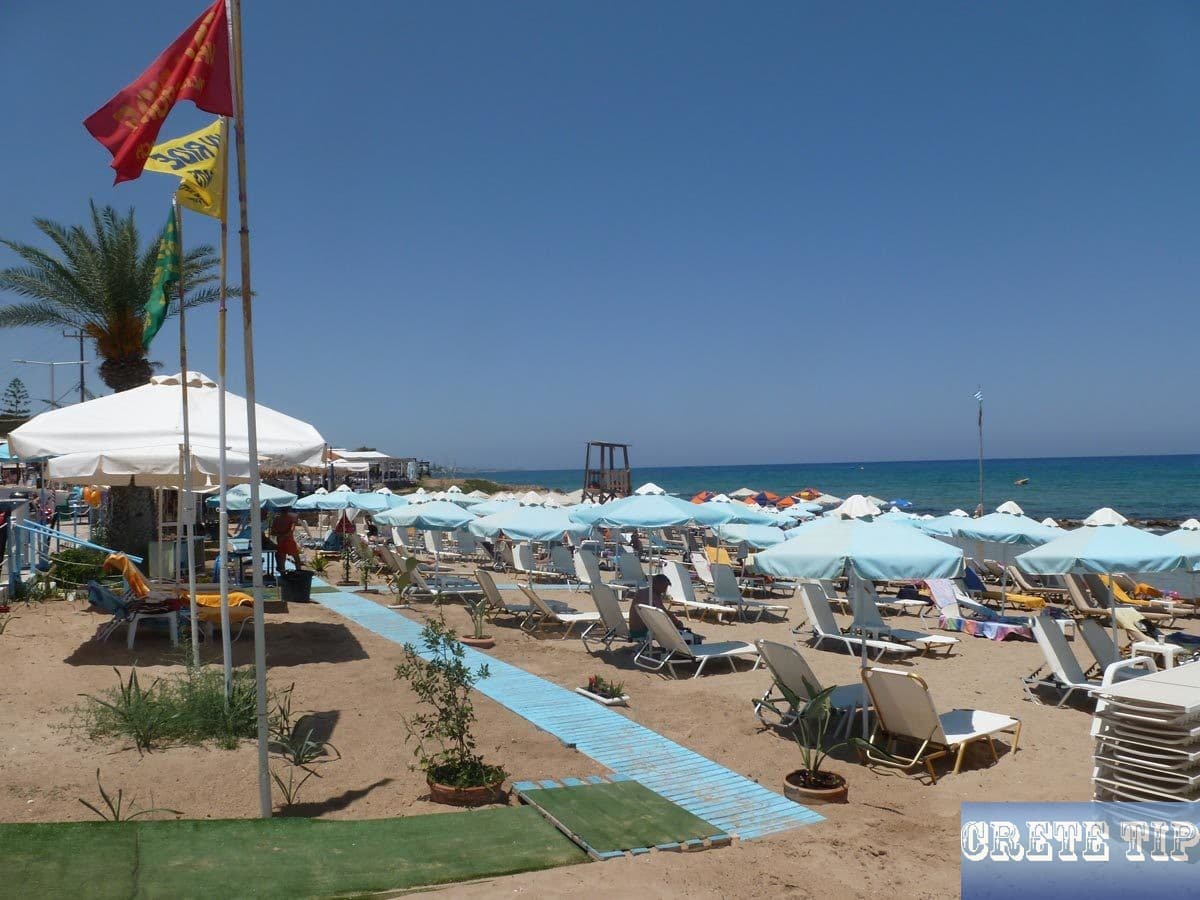
South of the main street, on the other hand, is the traditional old town with its narrow, winding streets and whitewashed houses and walls. Here you can still find traces of the traditional Malia, next to a large supermarket, taverns and pensions.
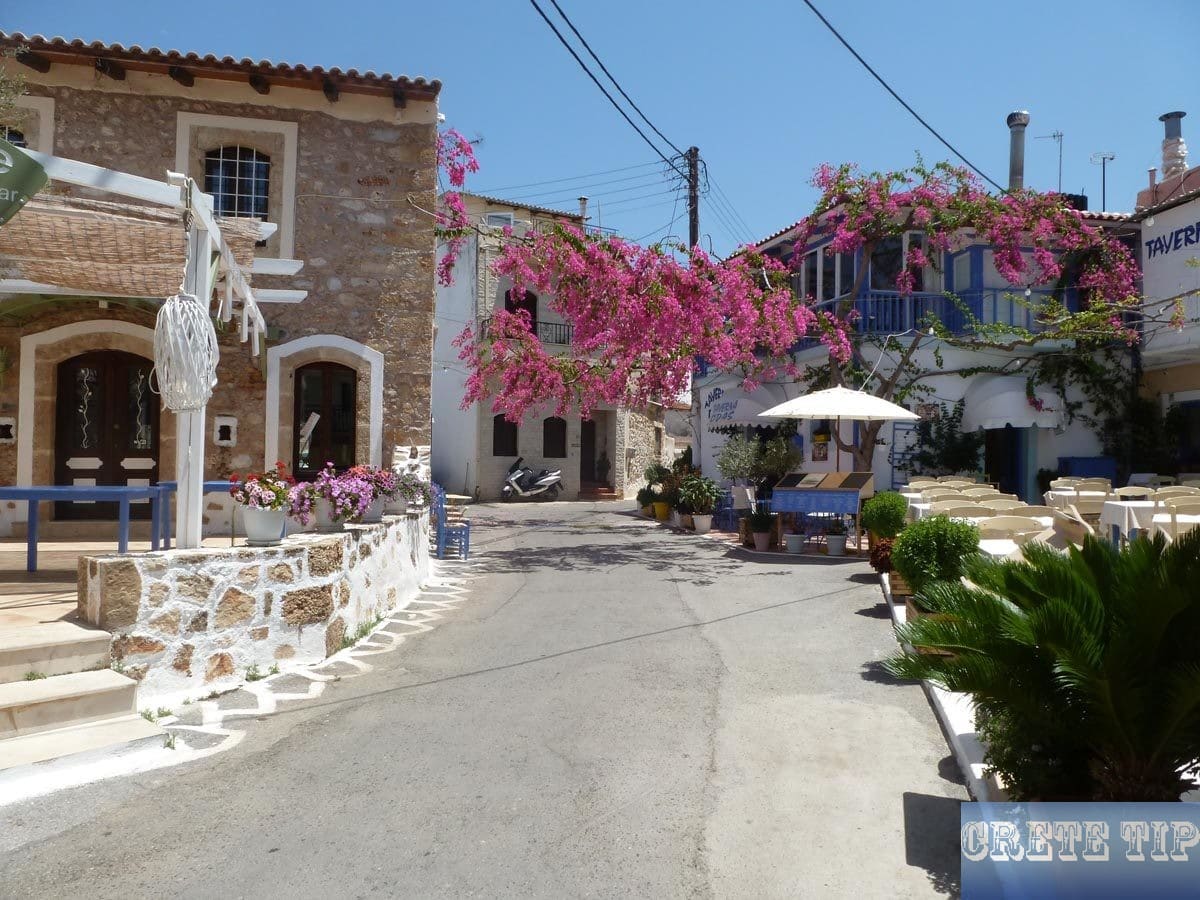
In the direction of the east along the coastal road – before the ‘Potamos Beach’ described further below – there is, by the way, the ‘Eintracht pub’ on Crete! Here, in addition to the matches of Eintracht Frankfurt, other German Bundesliga, European Cup and also international games are broadcast live and the owner comes including dialect from Rödelheim in Frankfurt.
Exact loaction of Eintracht Pup
Hotels in and around Malia
Many rooms in Malia are booked through packages offered by various tour operators. Therefore, it is not easy to find free rooms in the high season. If you want peace and quiet at night, you should avoid a hotel on Beach Road and book one of the many rooms in the old town centre.
Malia is easily reached by bus directly from Venizelou Airport in Iraklion, with one running every 30 minutes or so. From Aghios Nikolaos there is a bus every hour or so.
Overview of currently available hotels in and around Malia at the best price!
Directions to Malia
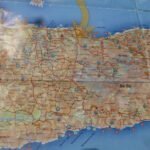
Click here: Directions Malia.
Potamos Beach of Malia
Fantastic sandy Potamos beach east of Malia. The formerly ‘Tropical Beach’ is close to the Palace of Malia and can be reached by bus, bike, car or even by foot.
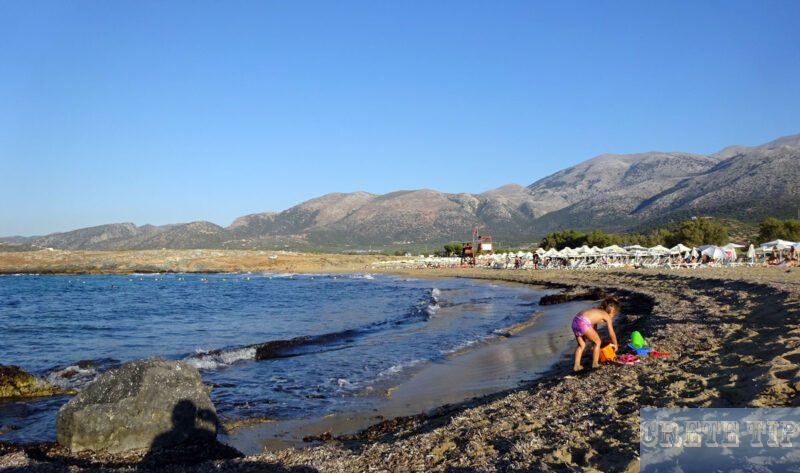
The Potamos Beach (ex ‘Tropical Beach’) of Malia is a wonderful sandy beach, which lies east of the built-up area near the Palace of Malia.
One can easily reach the Tropical Beach by bus from Malia. This is the same direction as to the palace ruins.
Behind the beach is an access road with parking on the side. At the eastern end behind the beach, parking is also possible on a site.
Per scooter, quad bike or car hire, the Tropical Beach Malia is easy to reach.
On foot, it is only a good 45 minutes out of the center of Malia, but this is not recommended for hot sunny days in the long run, absolutely.
At the western and eastern end of the beach, there are also taverns at the access road. A little further east towards Malia are the first hotels, but at Tropical Beach and in the area of the excavated palaces there are no building complexes.
Currently, the daily rent (2016) for a sun bed at the Tropical Beach Malia is 3 Euros. But there is also the possibility to buy Beach Towels and simple umbrellas in various supermarkets and tourist shops in Malia.
The beach is hardly crowded, except on boiling days.
It should not be swum across the red buoys, as there are on the open sea dangerous currents and maelstroms. Also, in a north-west wind of more than 12 miles (c.20 km) p.h. expect higher waves, when much more than a cooling in shallow, beach-water is hardly possible.
You could check the weather forecast for Malia here.
Video from the air and from the ground: Potamos Beach of Malia
Sand dunes
The sand dunes at the Tropical Beach of Malia are formed as a result of maritime progress like waves on one hand, and as a result of erosion of sea sediments, rivers and streams on the other hand.
The effect of the wind as well as the presence of anemophilous vegetation is crucial for the formation and deformation of sand dunes.
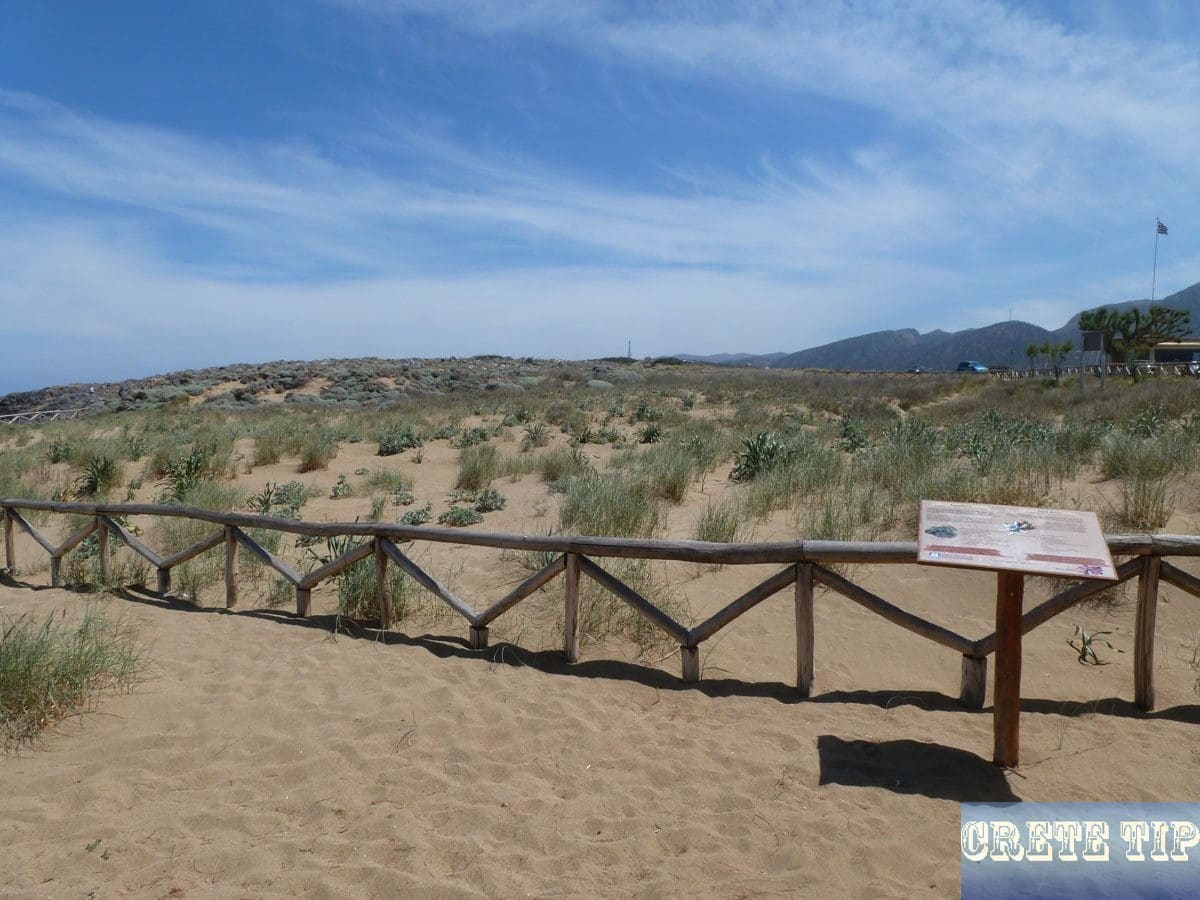
Plants contribute to the accumulation of sand, thus playing a significant role in the creation of the sand dune. This vegetation usually has an extensive root system, which protects the dunes from erosion of the wind and sea. In less shaped dunes’ vegetation is sparse, while in stabilized dunes, spiny vegetation gives way to more dense clusters of herbaceous vegetation.
Activities that affect sand dunes:
- road constructions,
- creation of tourism infrastructures,
- mechanical sand cleaning,
- sea-shore arrangement works,
- adjusting and rearranging the flow of streams and rivers,
- sand extraction,
- littering,
- Camping,
- trembling and stepping on the sand dunes,
- Off-road driving and car parking,
- the planting of trees.
Some areas at the Tropical beach of Malia are fenced to prevent the sand dunes from being trampled and stepped on and to prevent the destruction of the anemophilous vegetation.
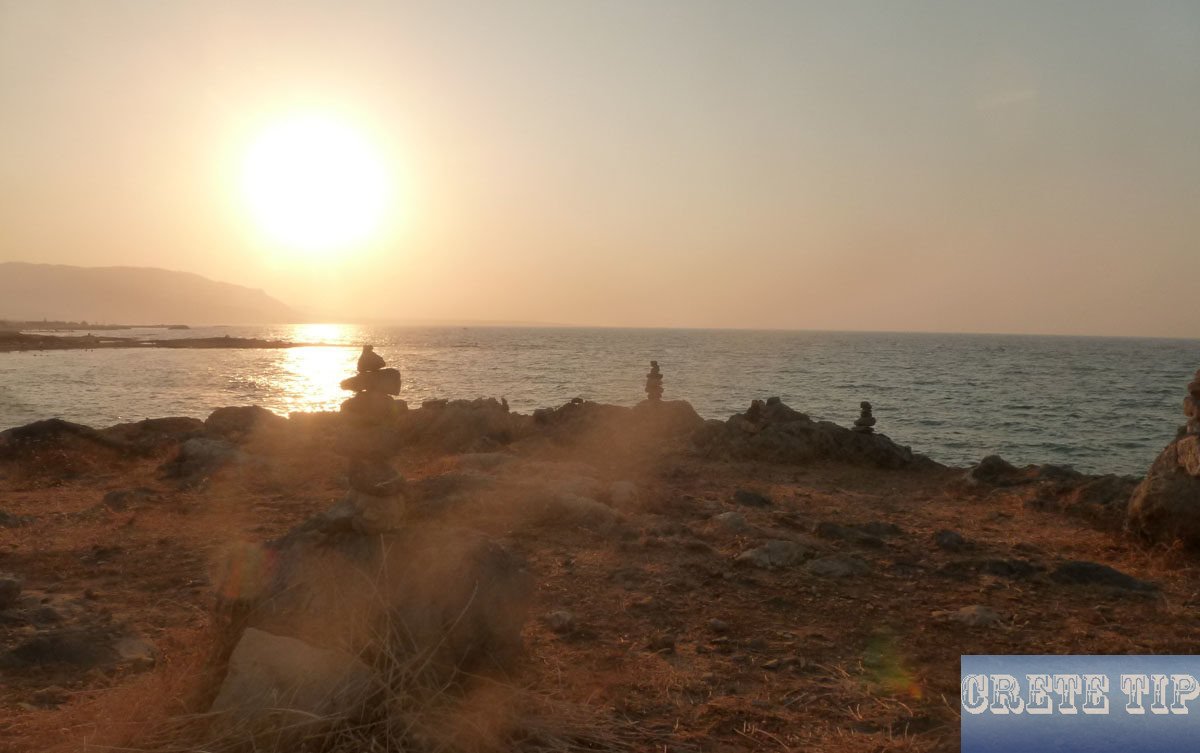
Directions to the Tropical Beach of Malia

Click here: Directions Tropical Beach of Malia.
From Malia up to the Lasithi Plateau
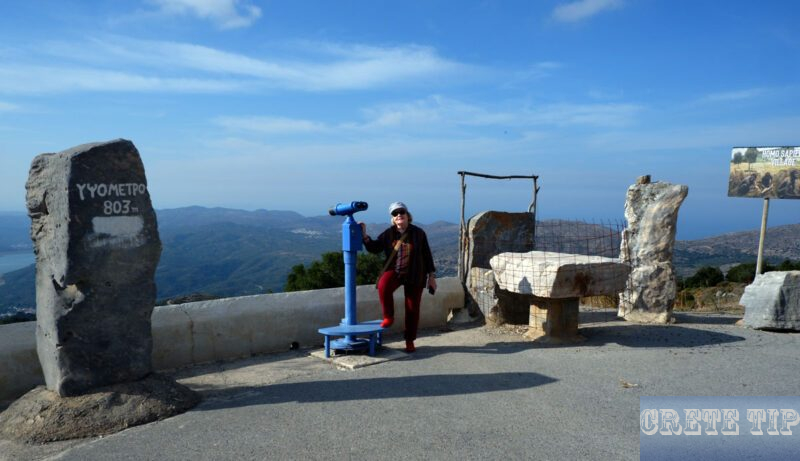
Directly from Malia there is a good route up to the Lasithi Plateau. Many also undertake the tour from Malia by quad bike, rental car or excursion bus.
The spring is located under a stone arch in the shade of an enormous plane tree, which is said to be two thousand years old and the largest in Europe. Its circumference cannot even be encompassed by twelve people.
There are also several taverns around the plane tree.
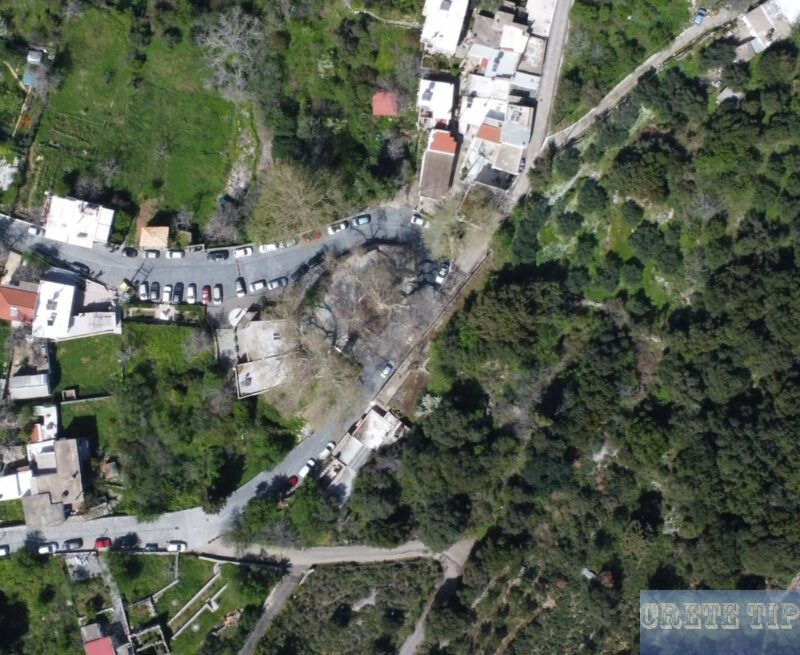
The Monastery of Panayia Kardhiotissa (Lady of the Heart) near Kera is one of the most revered places in Crete and an annual festival is held on 8 September.
The buildings date back to the Twelfth Century and although the heavily renovated exterior walls of the monastery look like white-washed concrete, the interior is quite spectacular. There are restored frescoes everywhere.
These only came to light in the 1960s when they were discovered under several layers of paintings. There is also a copy of a famous Twelfth Century icon of the Virgin, the original of which was brought to Rome in 1498. According to legend, several attempts by the Turks to steal this icon were thwarted as it always found its way back to Kera, despite being chained to a marble pillar. This marble pillar is now on the grounds of the monastery, while the chain now inside the church is said to relieve pain when placed around the bodies of the afflicted.
In addition, there is an attractive little museum.
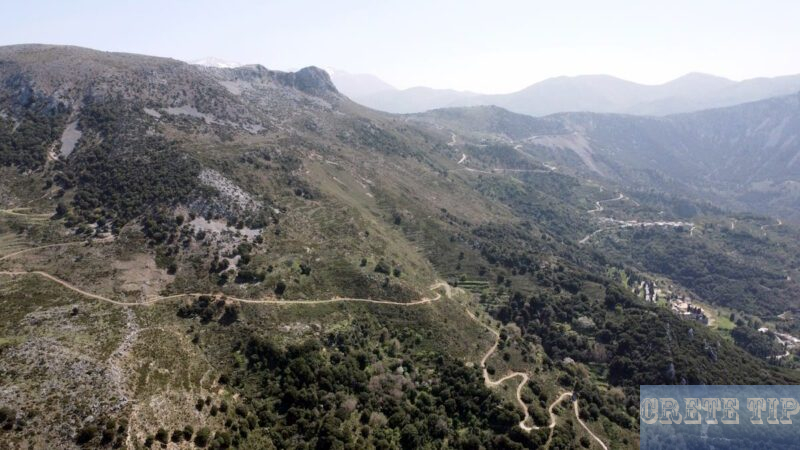
Finally, you then reach the Lasithi PlateauLassithi plateau.
Drone flight over Krasi on the ascent to the Lasithi plateau
Drone flight over Krasi with its two thousand years old and the largest plane tree in Europe. Views to Lasithi plateau and Malia on Crete.



